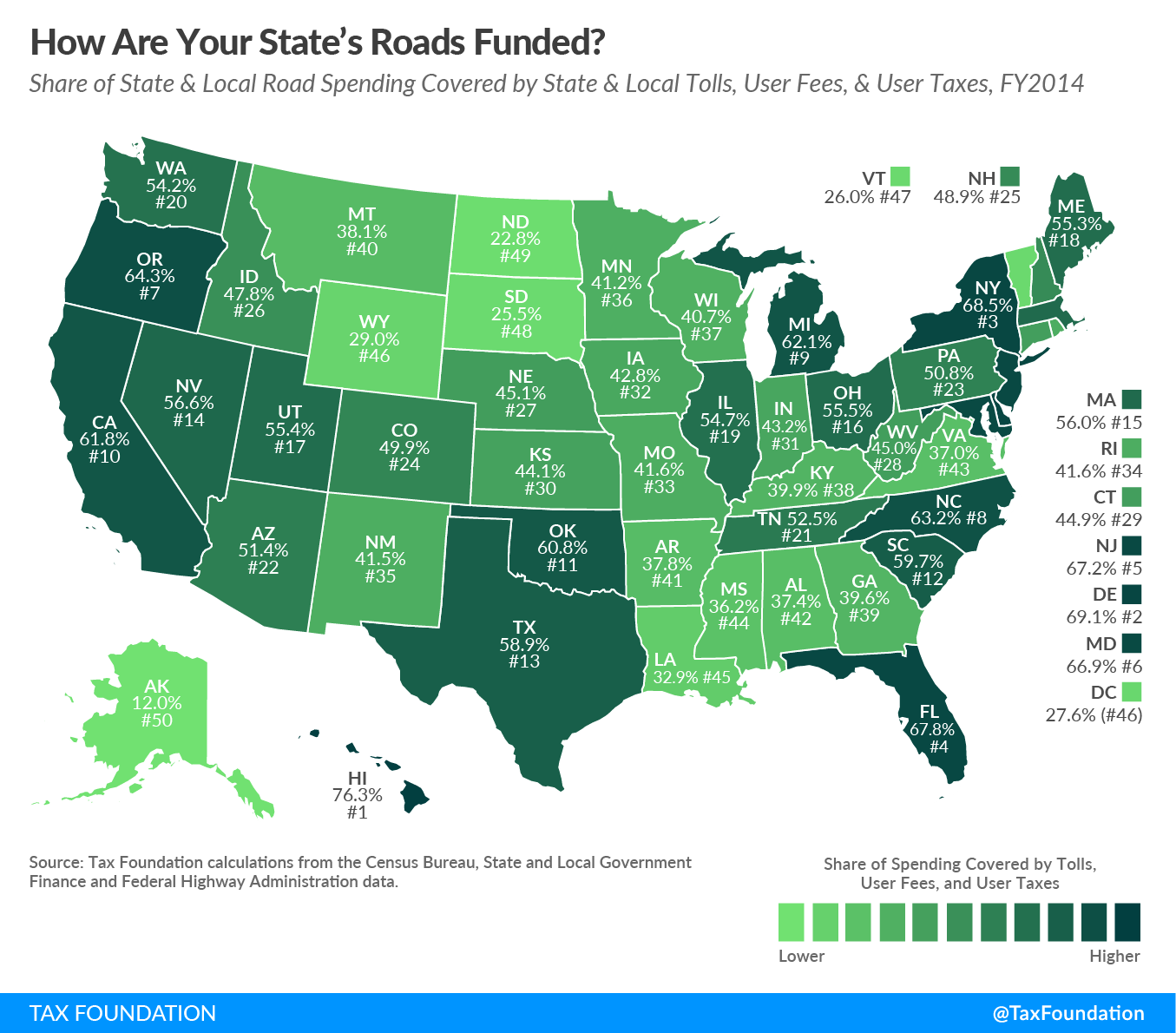Gas taxes are typically used to fund infrastructure maintenance and new projects, but the share of state and local road spending that is covered by tolls, user fees, and taxes varies drastically. It ranges from only 12 percent in Alaska to 76.3 percent in Hawaii. States like Alaska and North Dakota (funded 22.8 percent by fees and taxes) keep their transportation taxes low in the same way that they keep all taxes on state residents low, by exporting taxes (primarily through the severance taxA tax is a mandatory payment or charge collected by local, state, and national governments from individuals or businesses to cover the costs of general government services, goods, and activities. ).
While politically unpopular, gas taxes, fees, and tolls are all relatively good applications of the benefit principle, the idea that taxpayers should benefit from the taxes and fees they pay. One of the primary issues, however, with both the federal and state gas taxA gas tax is commonly used to describe the variety of taxes levied on gasoline at both the federal and state levels, to provide funds for highway repair and maintenance, as well as for other government infrastructure projects. These taxes are levied in a few ways, including per-gallon excise taxes, excise taxes imposed on wholesalers, and general sales taxes that apply to the purchase of gasoline. is that they’re not indexed for inflation. As time goes on and inflationInflation is when the general price of goods and services increases across the economy, reducing the purchasing power of a currency and the value of certain assets. The same paycheck covers less goods, services, and bills. It is sometimes referred to as a “hidden tax,” as it leaves taxpayers less well-off due to higher costs and “bracket creep,” while increasing the government’s spending power. increases, the nominal value of the gas tax decreases, leaving states with budget shortfalls and unfunded infrastructure. States should attempt to fund infrastructure through user taxes and fees as much as possible, internalizing the costs associated with using the state’s transportation systems.
Share this article